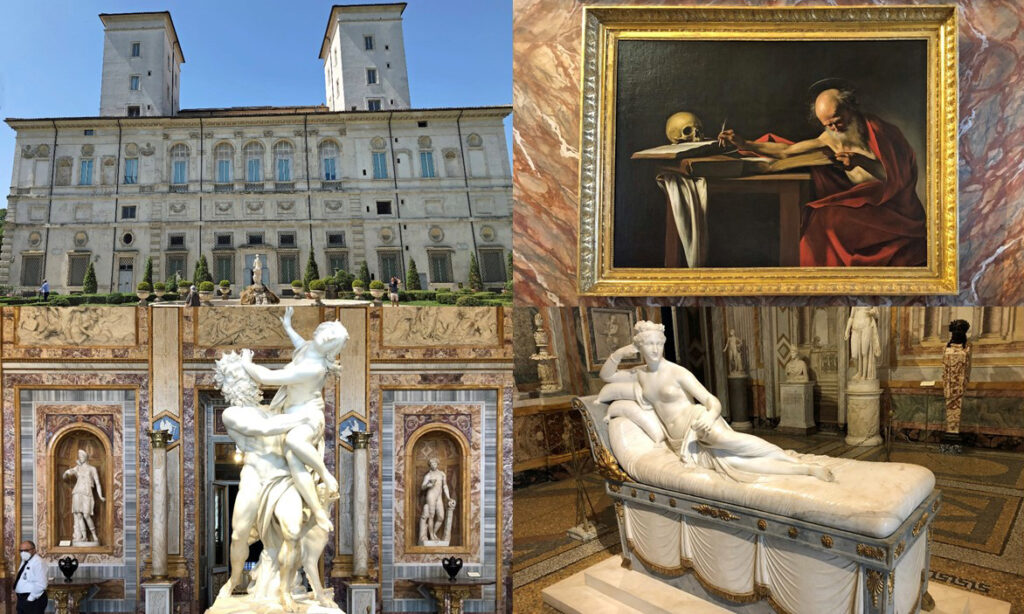Today, in the continuing series about Rome, we visit the Borghese Gallery, displaying one of the world’s greatest art collections.
In 1605, soon after his election, Pope Paul V named Scipione Borghese, his favorite nephew, cardinal and appointed him to many lucrative church positions, including papal secretary. Using his enormous wealth and the coercive powers of his offices, Cardinal Borghese assembled the best art in Italy, ranging from Roman and Egyptian antiquities to paintings by Caravaggio, Raphael, Rubens and Titian. He commissioned Gian Lorenzo Bernini, the leading sculptor of his age, to create enormous works based on Greek and Roman mythology. To display his massive collection and to entertain his important friends, beginning in 1608 Cardinal Borghese built a 20-room villa on several hundred acres of land just outside Rome given to him by Pope Paul. The land itself featured gardens displaying important works.
Cardinal Borghese’s land and villa stayed in the Borghese family until 1902, when the Italian state acquired them. Today, the villa is open to the public as the Borghese Gallery and the surrounding land is a large park. The gallery contains most of the cardinal’s extraordinary collection, including definitive paintings by Caravaggio, and important works added by his descendants. Fourth century mosaics on the floor of the entrance hall provide unique information about Roman gladiators. The many displayed works of Bernini, representing much of his life’s work, include two nearly identical busts of Cardinal Borghese, the second reportedly created in three days after the first developed a crack, and a remarkably expressive statue of David about to release his slingshot. An important nineteenth century sculpture by Canova, commissioned by Camillo Borghese, shows Napoleon’s sister Paolina, then Camillo’s wife, as Venus. If you are in Rome and miss the Borghese Gallery, you will have missed one of the city’s most important treasures.

Comments are closed.